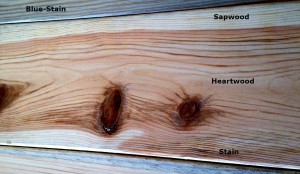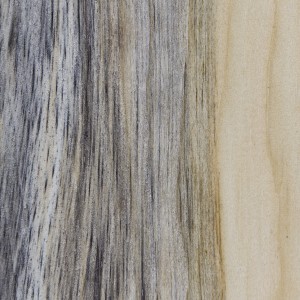
Brown Stain, also known as Coffee Stain, is a non-fungal staining of the wood caused by chemicals already present in the wood. High moisture content and high relative humidity are precursors to brown stain. As extractives in the wood undergo enzymatic changes in high relative humidity and high temperature environments, a browning of the wood can occur, it is very similar to the browning of an apple after the inner flesh is exposed to oxygen. Precursors to brown stain often develop in the log and will become more noticeable during air drying of the lumber; specifically, during hot, humid summer months and it may be exacerbated by unfavorable kiln drying schedules. Brown stain can range from a very light brown to a chocolate color, and in some instances may even appear pink or reddish-brown. It is prominent around knots and other areas that are difficult to dry, such as around stickers placed between the wood for drying, or any area that was deprived of adequate air flow and evaporation during drying. Brown Stain is not a strength reducing characteristic.



